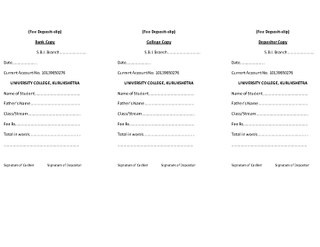Related Research Articles
The Eastern Caribbean dollar is the currency of all seven full members and one associate member of the Organisation of Eastern Caribbean States (OECS). The successor to the British West Indies dollar, it has existed since 1965, and it is normally abbreviated with the dollar sign $ or, alternatively, EC$ to distinguish it from other dollar-denominated currencies. The EC$ is subdivided into 100 cents. It has been pegged to the United States dollar since 7 July 1976, at the exchange rate of US$1 = EC$2.70.

The Rubik's Cube is a 3-D combination puzzle invented in 1974 by Hungarian sculptor and professor of architecture Ernő Rubik. Originally called the Magic Cube, the puzzle was licensed by Rubik to be sold by Pentangle Puzzles in the UK in 1978, and then by Ideal Toy Corp in 1980 via businessman Tibor Laczi and Seven Towns founder Tom Kremer. The cube was released internationally in 1980 and became one of the most recognized icons in popular culture. It won the 1980 German Game of the Year special award for Best Puzzle. As of January 2024, around 500 million cubes had been sold worldwide, making it the world's bestselling puzzle game and bestselling toy. The Rubik's Cube was inducted into the US National Toy Hall of Fame in 2014.

Roulette is a casino game which was likely developed from the Italian game Biribi. In the game, a player may choose to place a bet on a single number, various groupings of numbers, the color red or black, whether the number is odd or even, or if the number is high or low.

A gratuity is a sum of money customarily given by a customer to certain service sector workers such as hospitality for the service they have performed, in addition to the basic price of the service.

A fee is the price one pays as remuneration for rights or services. Fees usually allow for overhead, wages, costs, and markup. Traditionally, professionals in the United Kingdom receive a fee in contradistinction to a payment, salary, or wage, and often use guineas rather than pounds as units of account. Under the feudal system, a Knight's fee was what was given to a knight for his service, usually the usage of land. A contingent fee is an attorney's fee which is reduced or not charged at all if the court case is lost by the attorney.
A micropayment is a financial transaction involving a very small sum of money and usually one that occurs online. A number of micropayment systems were proposed and developed in the mid-to-late 1990s, all of which were ultimately unsuccessful. A second generation of micropayment systems emerged in the 2010s.

Win Ben Stein's Money is an American television game show created by Al Burton and Donnie Brainard that aired first-run episodes from July 28, 1997 to January 31, 2003, on Comedy Central. The show featured three contestants who competed to answer general knowledge questions in order to win the grand prize of $5,000 from the show's host, Ben Stein. In the second half of each episode, Stein participated as a "common" contestant in order to defend his money from being taken by his competitors. The show won six Daytime Emmy awards, with Stein and Jimmy Kimmel, the show's original co-host, sharing the Outstanding Game Show Host award in 1999. The show was produced by Valleycrest Productions, Ltd. and distributed by Buena Vista Television, both subsidiaries of The Walt Disney Company.

Jackpot is an American and Canadian television game show produced by Bob Stewart which saw contestants attempting to solve riddles in order to win cash and prizes.

HSBC Bank USA, National Association, an American subsidiary of the British banking group HSBC, is a bank with its operational head office in New York City and its nominal head office in McLean, Virginia. HSBC Bank USA, N.A. is a national bank chartered under the National Bank Act, and thus is regulated by the Office of the Comptroller of the Currency (OCC), a part of the U.S. Department of the Treasury. The company has 22 branch locations.
Wheel of Fortune is an Australian television game show produced by Grundy Television until 2006, and CBS Studios International in 2008. The program aired on the Seven Network from 1981 to 2004 and January to July 2006, aired at 5:00pm from 1981 to 1989 and from 2004 to 2006 and at 5:30pm from 1989 to 2003, and is mostly based on the same general format as the original American version of the program.

Fractional currency, also referred to as shinplasters, was introduced by the United States federal government following the outbreak of the Civil War. These low-denomination banknotes of the United States dollar were in use between 21 August 1862 and 15 February 1876, and issued in denominations of 3, 5, 10, 15, 25, and 50 cents across five issuing periods. The complete type set below is part of the National Numismatic Collection, housed at the National Museum of American History, part of the Smithsonian Institution.
Temptation: The New Sale of the Century is an American syndicated television game show loosely based on both the original Australian and American Sale of the Century versions, plus the 2005 Australian version, also titled Temptation. The show began airing in syndication on September 10, 2007, with the last first-run episode airing on May 23, 2008. Reruns continued until September 5, 2008.

Merv Griffin's Crosswords is an American game show based on crossword puzzles. The show was created by its namesake, Merv Griffin, who died shortly after beginning production on the series. Ty Treadway was the host, and Edd Hall was the announcer.

The Cocoanuts is a musical with music and lyrics by Irving Berlin and a book by George S. Kaufman, with additional text by Morrie Ryskind.
Blue Toad Murder Files is a murder mystery puzzle video game developed and published by the British video game developer Relentless Software. The game is episodic and the first installment was released for the PlayStation 3 via the PlayStation Store in December 2009. The entire "season" of the game, Blue Toad Murder Files: The Mysteries of Little Riddle, includes six separate episodes. The Windows version was available to download from online games distribution sites as well as from the official website in November 2010. Support for PlayStation Move was added in December 2010. An iOS version was released in April 2013.

Wheel of Fortune is an American television game show created by Merv Griffin. The show has aired continuously since January 1975. It features a competition in which contestants solve word puzzles, similar to those in hangman, to win cash and prizes determined by spinning a giant carnival wheel. The current version of the series, which airs in nightly syndication, premiered on September 19, 1983. It stars Pat Sajak and Vanna White as hosts, who have hosted the nighttime version since its inception. The original version of Wheel was a network daytime series that ran on NBC from January 6, 1975, to June 30, 1989, and subsequently aired on CBS from July 17, 1989, to January 11, 1991; it returned to NBC on January 14, 1991, and was cancelled that year, ending on September 20, 1991.

Hit Me is a 1996 American crime film directed by Steven Shainberg starring Elias Koteas, Laure Marsac, and William H. Macy. The film is based on the novel A Swell-Looking Babe by Jim Thompson.

The 2022 Money in the Bank was the 13th annual Money in the Bank professional wrestling pay-per-view (PPV) and livestreaming event produced by WWE. It was held for wrestlers from the promotion's Raw and SmackDown brand divisions. The event took place on Saturday, July 2, 2022, at the MGM Grand Garden Arena in the Las Vegas suburb of Paradise, Nevada; it was originally scheduled to be held at the city's Allegiant Stadium. This was the first Money in the Bank to be held on a Saturday, and it also elevated Money in the Bank to be regarded as one of WWE's five biggest events of the year, alongside the traditional "big four" of the Royal Rumble, WrestleMania, SummerSlam, and Survivor Series. This was also the final WWE pay-per-view and livestreaming event to take place before WWE owner Vince McMahon, who had served as chairman and chief executive officer of the company since 1982, announced his retirement on July 22, although he did return as Executive Chairman on January 10, 2023.
References
- ↑ Bennett, Jay (May 19, 2017). "Riddle of the Week #19: The Missing Dollar". Popular Mechanics. Retrieved April 11, 2004.
- ↑ Singmaster, David (19 March 2004). "7.Z. MISSING DOLLAR AND OTHER ERRONEOUS ACCOUNTING". SOURCES IN RECREATIONAL MATHEMATICSAN ANNOTATED BIBLIOGRAPHY.
- ↑ Walkingame, Francis (1859). Nicholson, W. (ed.). Walkingame's arithmetic. p. 170.
- ↑ Darling, David J. (2004). The universal book of mathematics : from Abracadabra to Zeno's paradoxes. Hoboken, N.J.: Wiley. ISBN 0-471-27047-4. OCLC 53434727.
- ↑ "Watch Help Season 1 Full Episodes". Archived from the original on 2015-11-17. Retrieved 2015-11-14.